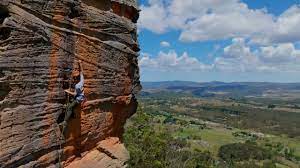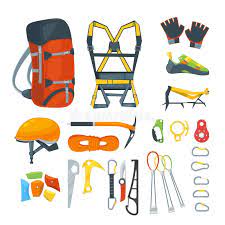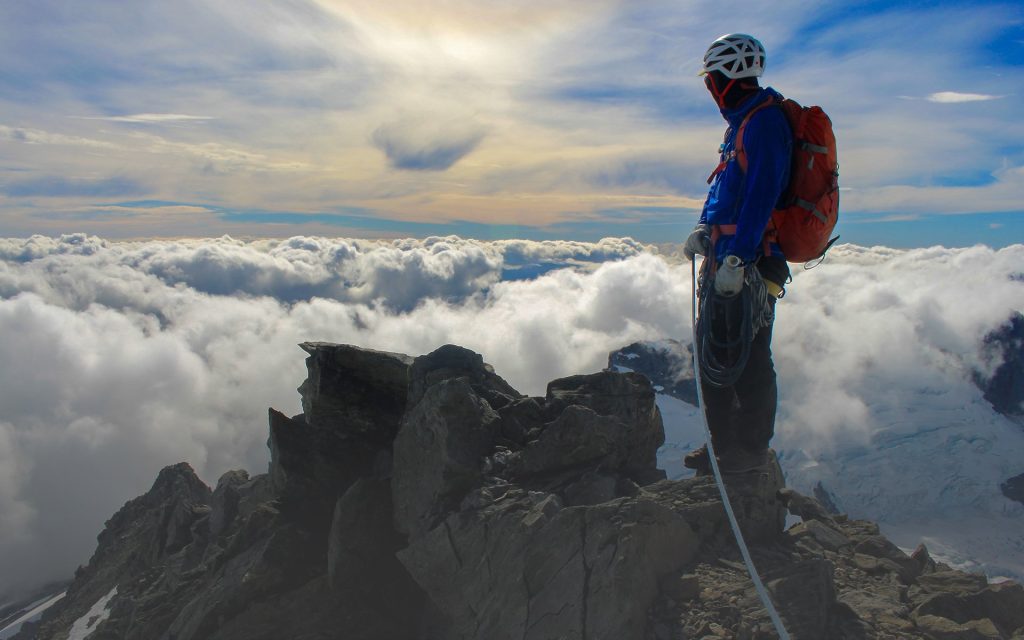No products in the cart.
Hobbies
Climbing shirt ideas & 11+ Tireless, safe climbing experience for beginners
Let’s check out 11+ with Koolteee now climbing experience and Climbing shirt ideas for beginners in the article below!

1. Exercise 2 – 4 weeks in advance
2 – 4 weeks before climbing, you need to focus on training your physical strength thigh and calf muscle groups to help you increase the flexibility and endurance of your legs on steep terrain. At the same time, you should also pay attention to training your back muscle groups to get used to carrying backpacks and heavy objects on your back.
In addition to the exercise regimen, you also need to combine daily nutritional supplements with foods containing fiber and vitamins C and A to strengthen the body’s resistance.
2. Learn carefully about the terrain and weather of the climbing location
By learning about the weather and terrain characteristics of the climbing destination, you can easily determine a convenient or challenging route and travel time according to your preferences.
3. Learn how to allocate physical strength for the whole journey
To prevent physical strength from being lost quickly during these days’ first stage of climbing, you need to move with Moderate speed, and regular breathing To limit shortness of breath and rapid loss of strength.
An extremely important thing to ensure good physical fitness for the climbing trip is you should move closer to the departure location at least 1 night before your trip. Because after a long journey, the body needs time to recover before continuing vigorous exercise. Especially for those who rarely travel by car and suffer from motion sickness, this is even more necessary.
4. Prepare carefully and correctly the climbing clothes and equipment
Comfortable and safe clothing are extremely important pieces to help you successfully conquer mountain peaks.
4.1. Women’s and men’s climbing shirt ideas
For the best climbing shirts, you should choose:
- Type of clothing available ability to absorb sweat, to easily regulate body temperature during exercise.
- Two types of materials commonly chosen are polyester and nylon. You should not choose cotton material, although this is a sweat-absorbent material, it takes a long time to dry and causes sweat to stick to the body.
- Regarding color, you should choose type clothes in bright colors, to reflect heat instead of absorbing it.
- Choose your outfit accordingly Multi-layer rules to accommodate changing weather during travel.
Comfort Colors Flowers Boho Wildflowers Floral Nature T-Shirt
Wildflowers Floral Nature climbing shirt for exploring journey.


Cartoon Friends Nostalgia Friends 80’s Cartoon Comfort Color T-Shirt
Mountaineering t-shirt for the group.
4.2. Climbing tools
- Flashlights, headlamps: Helps you illuminate the road, making it convenient to travel at night in dense forests. You can choose the type of lamp with the desired brightness.
- Trekking poles: Supports forces, helps reduce body weight, and increases climbing speed.
- Glove: You should choose one made of suede, hemp wool, and felt lining to help prevent slipping, absorb water, and create good friction.
- Medicines and medical first aid kits: Including fever reducers, insect repellents, and bandages.
- Lighter: Use when lighting a campfire or grilling food while climbing.
- Phone: Helps you call and save personal information and trusted people’s phone numbers to prevent dangerous situations.
- Compass: Helps you find your way and determine the direction to set up your tent at night.

6. Learn how to use items and basic survival skills
To improve your climbing experience, you should not ignore learning survival skills, making your own water filter, creating a fire source, repelling insects, tying ropes, or controlling your blood. …
7. Always stay focused and pay attention to the person you are with
During climbing, you should Go in a group or at least have 1 more companion If necessary, separate from the group to ensure your safety.
In addition, observing other team members also helps you promptly help in special situations and vice versa.
8. Share plans with loved ones
Whether traveling alone or in a group, you cannot avoid unexpected incidents or accidents, or something as simple as your phone running out of battery or losing signal.
This will help people know when they encounter an incident and contact rescue forces when necessary. Shared information will also facilitate the work of the rescue team, thanks to timely notification and being able to find you more easily.
9. Don’t take the fear of heights lightly
Fear of heights is a fairly common syndrome, estimated to occur in 2-5% of the population. Even if you don’t plan to climb steep hills, at some point in your journey there may be bridges or narrow paths on steep hillsides.
If you have an acute fear of heights, Please choose the routes and avoid such places. If traveling in a group, please share this with other members to have support during the climbing process.
10. Learn how to prevent insects
Hills and mountains are the habitat of many large and small animals, especially insects. They can cause small bites, itching, or even allergies and burning pain. Here are some types of insects you should pay attention to when climbing or trekking:
- Bees and wasps: If you are stung by a bee, you need to treat the sting immediately and avoid crushing the bee’s body to avoid adding more poison to the sting. Once treated, clean the stung area and apply a soothing ointment if needed. This is also a tip that can be applied when being pricked by a tree’s sharp thorns.
- Mosquito: mosquitoes appear in the evening and are mainly distributed at altitudes of about 600 to 2,200 m. Carry a can of bug spray in your first aid kit. When going to bed, zip the mosquito net in your tent to prevent mosquito bites.
- Squeeze: When squeezed too tightly, you can use thin-edged objects such as ATM cards or knives, combined with salt or fire to pry the squeegee out of the skin. Next, immediately wash the wound with water or salt water and bandage it.
- Horse flies: this insect is commonly found in alpine meadows and around rivers. If bitten by a horsefly, immediately disinfect the area (avoid applying pressure) and apply anti-inflammatory cream to soothe the pain.
Conclusion
Above is a summary of those climbing experiences need to put my heart and soul into it to help you have a smooth and safe journey. Among them, physical training and preparing the right Climbing shirt are the most important factors.

